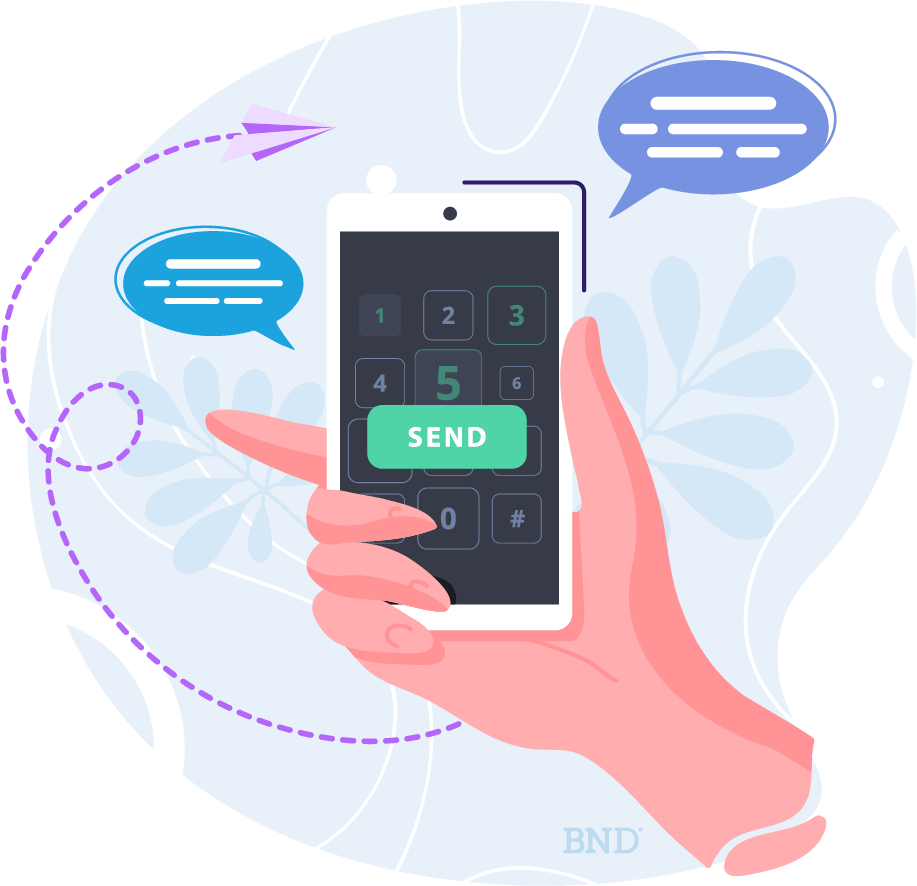MENU
Start
- Best Small Business Loans for 2024
- Businessloans.com Review
- Biz2Credit Review
- SBG Funding Review
- Rapid Finance Review
Our Recommendations
- 26 Great Business Ideas for Entrepreneurs
- Startup Costs: How Much Cash Will You Need?
- How to Get a Bank Loan for Your Small Business
- Articles of Incorporation: What New Business Owners Should Know
- How to Choose the Best Legal Structure for Your Business
Our Guides
- Business Ideas
- Business Plans
- Startup Basics
- Startup Funding
- Franchising
- Success Stories
- Entrepreneurs
Small Business Resources
Grow
- The Best Credit Card Processors of 2024
- Clover Credit Card Processing Review
- Merchant One Review
- Stax Review
Our Recommendations
- How to Conduct a Market Analysis for Your Business
- Local Marketing Strategies for Success
- Tips for Hiring a Marketing Company
- Benefits of CRM Systems
- 10 Employee Recruitment Strategies for Success
Our Guides
- Sales & Marketing
- Finances
- Your Team
- Technology
- Social Media
- Security
Small Business Resources
Lead
- Best Business Phone Systems of 2024
- The Best PEOs of 2024
- RingCentral Review
- Nextiva Review
- Ooma Review
Our Recommendations
- Guide to Developing a Training Program for New Employees
- How Does 401(k) Matching Work for Employers?
- Why You Need to Create a Fantastic Workplace Culture
- 16 Cool Job Perks That Keep Employees Happy
- 7 Project Management Styles
Our Guides
- Leadership
- Women in Business
- Managing
- Strategy
- Personal Growth
Small Business Resources
Find
- Best Accounting Software and Invoice Generators of 2024
- Best Payroll Services for 2024
- Best POS Systems for 2024
- Best CRM Software of 2024
- Best Call Centers and Answering Services for Busineses for 2024
Our Recommendations
What Is a Virtual Phone Line?

Table of Contents
A reliable telephone communication system is one tool every business should have. In the past, though, the best business phone systems were expensive and difficult to implement for small businesses. No longer; today, a virtual phone number is a simple, affordable solution that can help expand your business beyond the confines of a traditional phone line. This guide covers everything you need to know about virtual phone lines and how they could benefit your business.
What is a virtual phone line?
A virtual phone number, or direct inward dialing (DID), is a telephone number that is not tied to a specific phone device or line. Also, it allows the user to redirect and route calls from one number to another number, IP address, or device. Virtual phone lines are also known as “online numbers.”
Traditionally, phone numbers were designed to work over a single phone line that was physically connected from the phone company to your home or business; plus, any calls made to that number could only be sent to that specific physical location. Cellphones, while more mobile than landlines, are still dependent on cell towers to provide coverage. A virtual number gives a business greater control and flexibility in how it receives calls by removing these physical limitations and requiring only an internet connection.
How do virtual phone numbers work?
Virtual phone numbers rely on the internet instead of a phone company or cell tower to provide coverage; this allows users to be reached by phone or computer. It also allows you to change the device you use in real time. For example, if you only want to be available on your mobile phone at certain times, you can route all calls you receive during work hours to a virtual phone line.
How to get a virtual phone number
If your business already has a Voice over Internet Protocol (VoIP) system, you can add virtual numbers to your current package through your VoIP provider. Check out our reviews of the best business phone systems for VoIP for some options.
If you don’t have a virtual phone system, you can purchase a package that includes one virtual number and a certain number of extensions and minutes. Minutes are incurred depending on how long you talk on the “business line.” A virtual phone system generally costs between $10 and $25 per month for one or two virtual numbers with 300 to 500 minutes. Costs typically increase as you add more virtual phone numbers and minutes to your plan.
Also, you can go through a provider that only sells virtual numbers. These are some of the most popular virtual phone line providers:
- Grasshopper supports calls, texts and voicemail. It offers three service plans, starting at $14 per month, allowing you to choose the one that works best for your business. Read our review of Grasshopper to learn more about its plans.
- 8×8 is a cloud-based VoIP unified communications system that boasts highly reliable service, three-way calling, online voicemail, call forwarding and ring groups among its many features. It also integrates with office programs like Salesforce and Slack. Plans start at $24 per month. Read our review of 8×8 for more details about its VoIP solutions.
- Google Voice provides individual users with a free virtual phone number that can be used for calls, text messages and voicemail. It has an easy-to-use app for smartphones or computers, and you can link the virtual number to a mobile or landline number. Business plans start at $10 per month per user for up to 10 users in 10 domestic locations.
- MightyCall is a cloud-based business phone system that offers phone calls, text messaging and voicemail, as well as smart call forwarding and call recording. Multiple subscription plans are available, starting at $15 per month with an option for a seven-day free trial.
What are the benefits of a virtual phone number?

Virtual phone numbers offer a strong list of benefits and features to help small businesses compete with larger organizations. They provide flexibility in hardware, endless options for localization and tons of cost-saving potential. Virtual phone numbers make more sense for businesses of all sizes than traditional business landlines.
1. Ability to receive calls anywhere
Without being tied to a physical location, you can receive calls anywhere, anytime and on your preferred device. For example, if someone in your company is going to be away and needs to be reachable by phone but doesn’t want to give out their cellphone number, you could assign a virtual number to their cellphone.
2. Incoming call distribution
Virtual phone numbers are also beneficial for companies with multiple office locations. Instead of a phone ringing in one office, incoming calls can be sent to phones in each office. You can do this by making your virtual phone line’s destination a call queue or ring group; this will ring the phones of any employee who is designated as part of the queue or group either simultaneously or sequentially, depending on your preferences.
3. Localized phone numbers
If your office is located in a different area than your customer base, you can assign a local area code to your phone line. This helps you establish a presence in a key area and lowers costs on incoming calls. Customers are more likely to call and answer calls from a local number than one with an area code they don’t recognize.
4. Integrations with marketing campaigns
You can also track key customer metrics through your virtual phone line. Many CRM systems let you assign a unique number to a specific campaign — for example, so you’ll know if someone is calling for that campaign based on the number alone. This data can help evaluate the effectiveness of a campaign. See our reviews of the best CRM systems for more details.
5. Fewer equipment charges
Virtual phone lines can save your business thousands of dollars in telephony and equipment charges. Because they are 100% digital, virtual phone lines require no hardware, equipment, installation or maintenance.
6. Advanced features
When searching for a virtual phone provider, see if the company you’re considering offers text and voicemail features in addition to phone service. More expensive and complex plans typically offer features like three-way calling, ring groups, caller ID, call waiting and forwarding, call recording, and call transfers. You should also see how reliable the service is in terms of uptime and whether customer support is included in your plan.
What are the drawbacks of virtual phone lines?
The benefits of virtual phone lines vastly outweigh the cons for most business users; however, there are a few potential drawbacks compared with traditional landlines.
1. You’re always “available.”
The foremost concern is the effect on work-life balance. When you have virtual phone numbers, you and your team are always accessible. It’s important to set clear expectations around when employees are expected to answer calls and messages and when they aren’t. Having an “always on” mentality may seem great, but failing to provide time for your team to unplug and rest could lead to occupational burnout, declining productivity, and low morale.
2. The call quality depends on the internet.
Another drawback is the inconsistent call reliability. Because a virtual phone number is purely internet-based, the call quality will only be as strong as your internet connection.
3. Data limits can be costly.
If you are on a plan that uses minutes, you must be conscious of how you use those minutes — ensure you don’t waste them on spam or non-business calls. Otherwise, you risk driving your costs up above your budget.
Understanding virtual phone lines
Virtual phone lines seem just like ordinary phone numbers to anyone who is calling you. But unlike traditional phone lines that are tied to a specific cellphone or landline, they let you receive calls on whatever device is most convenient for you at the time. That can be a cellphone, a landline, or a desktop or laptop computer. You can also usually make calls from multiple devices and, if you need to, change which devices ring when the phone line is called. Many virtual phone line providers also include other standard phone features, including texting and voicemail.
Using virtual phone lines can provide some of the advantages of having a business phone number without the need for a dedicated line. If you’re thinking about a virtual phone line or perhaps multiple virtual lines for multiple employees at your business, you should take a look at what options are available at different price points.

Frequently asked questions about virtual phone numbers
Steven Melendez and Sean Peek contributed to this article.







